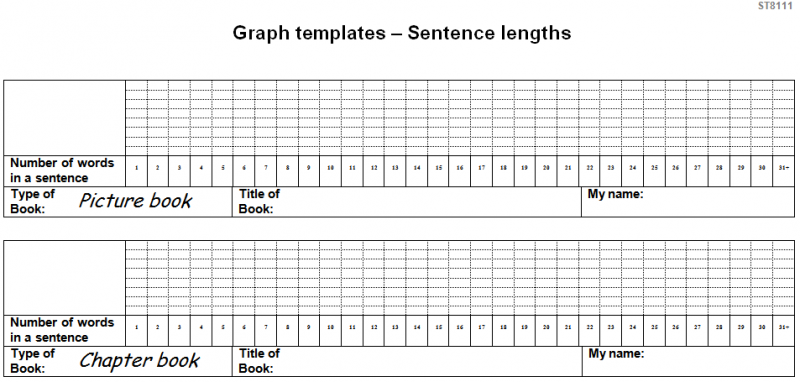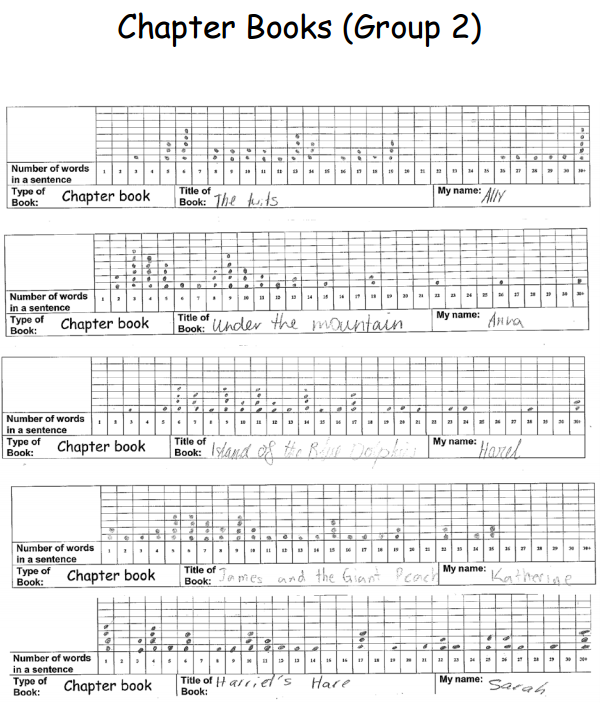Sentence lengths II
This task is about statistical investigations.

Do you think picture books or chapter books usually have fewer words in their sentences?
|
Part I - Individual work
|
||
| a) | i) |
Which type of book do you predict will have longer sentences overall?
|
|
(A) Picture books
(B) Chapter books (C) Both types of books will have sentences with similar numbers of words in them. |
||
| ii) |
Explain your prediction. |
|
| b) | i) | Select one picture book and one chapter book. |
| ii) | For each book, count the number of words in 40 consecutive sentences. | |
| iii) | Record the number of words in each sentence on the graph provided. | |
|
iv)
|
Use a separate graph for each type of book.
|
|
| c) | i) |
Which of your two books had sentences that were usually longer?
My picture book / My chapter book / Both had sentences about the same length (circle one) |
| ii) |
Use your two graphs to explain why you circled that option. |
|
Part II - Group work
|
||
| d) | i) |
Look at all the graphs of picture books that your group made.
Did the picture books have similar patterns of sentence lengths as each other? Yes / No (circle one)
|
| ii) |
Use your group’s graphs of picture books to explain why you circled that option. |
|
| e) |
How do your group’s graphs of sentence lengths of picture books compare with your graphs of chapter books?
|
|
| Part III - Group work | ||




